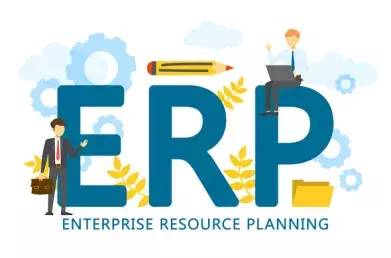Effective Communications - a key factor in managing ERP change
According to the Project Management Institute (PMI), half of project failures are related to ineffective communications [1]. The same report points out that organisations that communicate effectively have more successful projects, where success means meeting project goals, and delivering on time and on budget.
While having an effective communication strategy for an ERP implementation may not guarantee success, its absence can clearly have a significant negative impact on your project.
There are few organisations in which the need to manage constant change is not part of their everyday reality. The drivers of change are varied – resulting from an organisation’s own strategic direction, business growth or introduction of new products and services. Additionally, change is frequently imposed by external factors – market or customer demands and regulatory change being two prime examples.
Many of these drivers can highlight the need to significantly invest in new IT systems, such as ERP, driving organisational and procedural change through all impacted areas. When an organisation embarks on an ERP project which, by its nature, reaches across the whole organisation, a significant level of organisational and process change can be expected.
Embarking on any significant organisational change presents many challenges, each of which individually can cause significant disruption or even – in extreme situations – can be the difference between apparent success and failure.
A report published by McKinsey & Company in 2008, “The Inconvenient Truth About Change Management”, reports numerous research studies suggesting only 30 percent of change programs are successful, and that the 70 percent that fail do so as a result of employee attitudes and management behaviour. This is unsurprising given that, by nature, people – and organisations – are generally resistant to change. Therefore, it is critical that the importance of managing this proactively is understood and is a key consideration when undergoing any significant change initiative.
While there are many reasons for this resistance to change, a key factor that is frequently cited is a lack of understanding of the reasons and objectives for the proposed change and how this may impact the organisation, both in overall terms as well as down to functions, departments, managers and individuals.
It should therefore be evident that to address concerns throughout the organisation, a key element of any change initiative is to have clear and consistent communications to ensure that all stakeholders are kept up to date on what is happening as the project progresses. This communications strategy should be defined and agreed from the outset. It can be tailored to the specific needs of the organisation or project but should include consideration of the following:
- Audience – who are the stakeholders and what are their needs in terms of, frequency and preferred methods of communication?
- Message – what information needs to be communicated, what format and level of detail is appropriate?
- Sender – who is responsible for communicating the agreed message?
- Receiver – who will receive communications in the first instance and are they responsible for further dissemination?
- Reason – why is this being sent to ensure it is relevant to audience?
- Frequency & timing – covering both regular and exceptional communication. Timing is critical for credibility.
- Management of confidential / sensitive information – this should be considered as frequently there is information that may need specific handling with regards to commercial sensitivity or privacy / regulatory demands.
Another important consideration is to ensure that what is being communicated is timely, accurate and relevant. It should be open and address any “bad news” appropriately and realistically. Additionally, it should include details of “what we do not know yet” to avoid feeding the potential information vacuum which can lead to conjecture.

Summary
An effective communications strategy is a key element of any significant change initiative, greatly increasing the likelihood of project success when planned and executed properly. It helps ensure that all stakeholders understand the why, what and when of any proposed change, the impact on them and their expected contribution to the activity. It’s particularly important for ERP projects, given their wide scope and the significant level of organisational and business process change they bring about.
This blog was written by Gerry Savage, Principal Consultant at Lumenia. For further information please send an email to Gerry Savage or download a copy of the Lumenia Business Change Management in ERP Projects Report.


